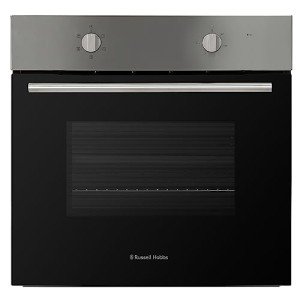A Brief History Of Oven Built In History Of Oven Built In

The Rise of Built-In Ovens: A Seamless Approach to Modern Cooking
In contemporary cooking areas, where style visual appeals mix flawlessly with functionality, one appliance stands apart as a true game changer: the built-in oven. As property owners and chefs alike continue to seek innovative services that improve their cooking experience, built-in ovens have become increasingly popular. Built-in Oven explores the benefits, factors to consider, and trends surrounding built-in ovens, highlighting why they are a necessary function in modern-day cooking areas.
What is a Built-In Oven?
A built-in oven is a cooking area device created to be integrated into the cabinets of a cooking area instead of standing alone. Unlike conventional freestanding ovens, which can be moved and positioned anywhere, built-in ovens come in various designs and sizes to fit particularly within designated spaces. Offered in single or double setups, these ovens offer a structured appearance that matches contemporary kitchen area designs.
Advantages of Built-In Ovens
1. Space-Saving Design
One of the most enticing advantages of built-in ovens is their space-saving style. By incorporating the oven into cabinetry, you can maximize valuable counter and flooring space. This is especially advantageous in smaller sized kitchens, where making the most of space is vital. Built-in ovens can be installed at eye level, making them more accessible and minimizing the need to bend down.
2. Visual Appeal
Built-in ovens contribute to a smooth and cohesive cooking area style. Available in numerous finishes-- such as stainless steel, black, white, and customized kitchen cabinetry-- they can blend perfectly into the general decor. This visual appeal improves the kitchen area's visual consistency and elevates the space, producing a contemporary and sophisticated atmosphere.
3. Boosted Functionality
Numerous built-in ovens come geared up with innovative cooking innovations, such as convection cooking, steam ovens, and smart features. These improvements permit versatile cooking options, making it easier to achieve professional-level outcomes at home. Smart built-in ovens can even link to Wi-Fi, enabling users to control the oven from another location, get notifications, and gain access to a range of cooking programs and recipes.

4. Enhanced Ventilation
Because built-in ovens can be integrated with kitchen hoods and ventilation systems, they can help preserve better air quality and reduce cooking smells. built in electric ovens is particularly substantial for those who love to cook with fragrant spices and components, as an efficient ventilation system can keep the kitchen area comfortable and inviting.
5. Personalization Options
Built-in ovens offer a large range of customization choices to suit individual cooking styles and needs. From professional-grade appliances with multiple cooking modes to compact designs for smaller sized cooking areas, homeowners can choose the oven that fits their particular requirements. Numerous manufacturers also provide customizable front panels, enabling you to match the oven's appearance to your kitchen cabinetry for a really combined appearance.
Factors to consider When Choosing a Built-In Oven
While built-in ovens have lots of benefits, there are necessary factors to consider to remember before purchasing:
1. Price
Built-in ovens generally include a higher price than their freestanding counterparts due to their style and setup requirements. It's important to aspect in both the expense of the oven and any extra costs connected to cabinets adjustments or setup.
2. Installation Requirements
Setting up a built-in oven typically requires professional help, specifically if you require to customize existing cabinets. Guarantee that you consider any costs connected with setup, including labor and prospective cabinets changes.
3. Size and Dimensions
Before acquiring a built-in oven, determine the designated area accurately to guarantee an appropriate fit. Built-in ovens been available in different sizes and configurations, so picking one that aligns with your needs and cooking area design is essential.
4. Lifestyle and Usage
Consider your cooking habits and needs when picking a built-in oven. If you frequently host large gatherings, a double oven might be more useful. On the other hand, if you have a compact cooking area, a single-wall oven might be sufficient.
Patterns in Built-In Ovens
The cooking area device market is continuously evolving, and built-in ovens are not exempt from emerging patterns. Some present patterns include:
Smart Technology Integration: With the increase of wise home technology, built-in ovens now often feature connection choices. This enables users to monitor cooking progress and change settings via mobile apps.
Energy Efficiency: As sustainability ends up being a top priority, numerous makers are purchasing energy-efficient built-in ovens that minimize energy intake while keeping performance.
Multi-functional Designs: Built-in ovens now use functions such as air frying, slow cooking, and steaming, offering flexibility that satisfies a large range of cooking approaches.
Conclusion
Built-in ovens unquestionably represent an ideal blend of design, function, and benefit in today's kitchens. As more homeowners select this modern service, the focus shifts to developing a cooking space that is as aesthetically pleasing as it is useful. Whether you are building a new home or remodeling your kitchen, considering a built-in oven could elevate your culinary experience and change your kitchen area into a stylish and functional haven. With an array of options readily available and ongoing developments in technology, built-in ovens stay a standout choice for both beginner cooks and culinary lovers alike.
